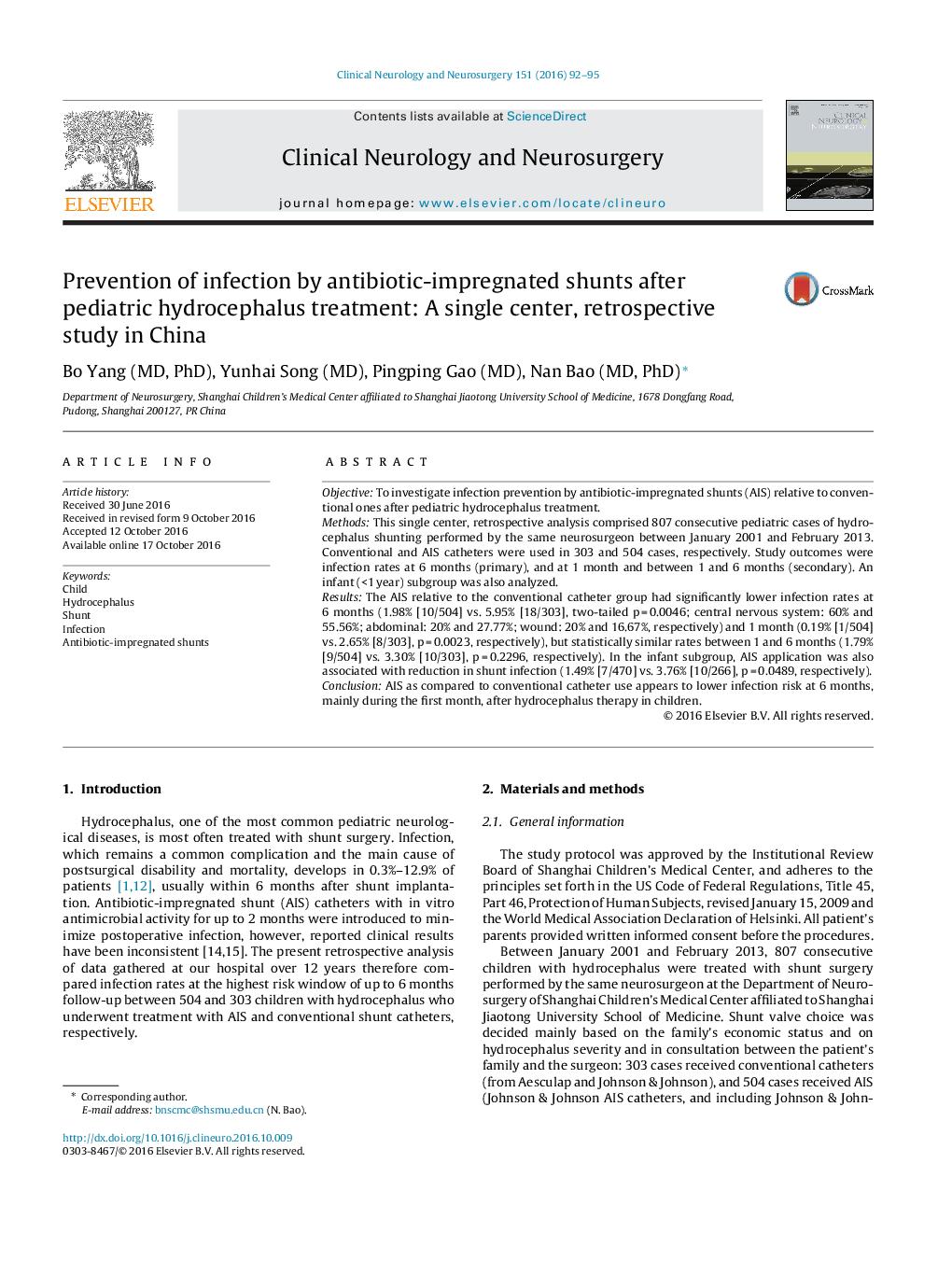| Article ID | Journal | Published Year | Pages | File Type |
|---|---|---|---|---|
| 5627093 | Clinical Neurology and Neurosurgery | 2016 | 4 Pages |
â¢A retrospective cohort study included 807 consecutive pediatric cases at a single center.â¢Antibiotic-impregnated shunts (AIS) significantly decreased shunt infection rates.â¢Most of the effect of AIS occurred in the first month after surgery.
ObjectiveTo investigate infection prevention by antibiotic-impregnated shunts (AIS) relative to conventional ones after pediatric hydrocephalus treatment.MethodsThis single center, retrospective analysis comprised 807 consecutive pediatric cases of hydrocephalus shunting performed by the same neurosurgeon between January 2001 and February 2013. Conventional and AIS catheters were used in 303 and 504 cases, respectively. Study outcomes were infection rates at 6 months (primary), and at 1 month and between 1 and 6 months (secondary). An infant (<1 year) subgroup was also analyzed.ResultsThe AIS relative to the conventional catheter group had significantly lower infection rates at 6 months (1.98% [10/504] vs. 5.95% [18/303], two-tailed p = 0.0046; central nervous system: 60% and 55.56%; abdominal: 20% and 27.77%; wound: 20% and 16.67%, respectively) and 1 month (0.19% [1/504] vs. 2.65% [8/303], p = 0.0023, respectively), but statistically similar rates between 1 and 6 months (1.79% [9/504] vs. 3.30% [10/303], p = 0.2296, respectively). In the infant subgroup, AIS application was also associated with reduction in shunt infection (1.49% [7/470] vs. 3.76% [10/266], p = 0.0489, respectively).ConclusionAIS as compared to conventional catheter use appears to lower infection risk at 6 months, mainly during the first month, after hydrocephalus therapy in children.
